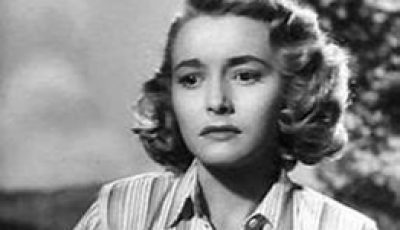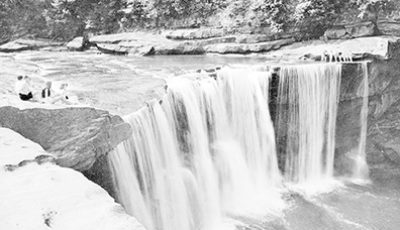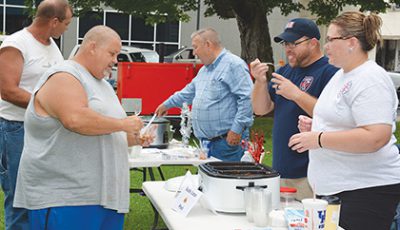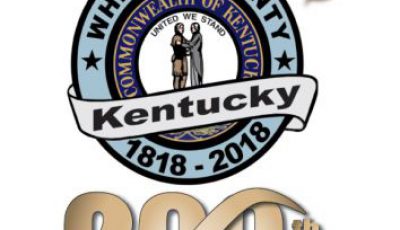Looking back at the very first Whitley County Fiscal Court meeting
If you attend a Whitley County Fiscal Court meeting today, you are likely to hear discussions about annexing roads into the county road system or extending roads. You may hear talk about how to allocate coal severance funds, or discussion about civic groups picking up liter.
 What would they have talked about during the first Whitley County Fiscal Court meetings though? What did they talk about during the first fiscal court meeting ever?
What would they have talked about during the first Whitley County Fiscal Court meetings though? What did they talk about during the first fiscal court meeting ever?
The first meeting of Whitley County’s justices of the peace took place on the third Monday in April 1818, April 20, 1818 to be precise.
The meeting took place in the two-story log home of Samuel and Martha Cox. At the time they owned a tavern and Samuel was building a ferry.
The first person to arrive was Burton Litten, who the day before had come from Frankfort with the commissions of various officers. Litten received his own commission as sheriff. Charles Rockhold was commissioned as the first coroner. Joseph Eve was commissioned as the first county clerk.
Litten and everyone else, who had been commissioned as an office holder by Lt. Gov. Gabriel Slaughter, who was acting governor, assembled promptly in Cox’s living room at 9 a.m.
Senior Gentleman Justice Edward Reilly presided with Gentlemen Justices John Berry, Uriah Parks, Francis Faulkner, Isaac King, Samuel Cox and J.L. Clark in attendance.
Concern over the safety of the county’s settlers from Indian attacks was the primary topic of discussion for most of the rest of the day.
Berry led the conversation with the other justices in agreement. Reilly asked for volunteers to serve as constables to help the various captains of the militia that had already been organized.
Baker Watkins was appointed constable in the bonds of Captain Prichard’s old company of militia. Thomas Foley was appointed constable in the bonds of Captain George Tye’s company of militia. John Ross was appointed constable in the bonds of Captain Jacoway’s company of militia. William Edwards and John Laughlin were appointed constables in the bonds of Captain Steele’s company of militia.
Each of the above executed bonds in the penal sum of $1,000 each with good and approved sureties, and were sworn as the law directs to well and faithfully perform their duties.
The only other action taken by the court that first day was to appoint Gill Eve as Counselor and Attorney of the Commonwealth in the county. As the hour was late, court adjourned until 10 a.m. the next day.
The second day of court on April 21, 1818, dealt with the topic of where to place the county seat.
Reilly wanted the “seat of justice” to be on Lynn Camp Creek where Woodbine is now located. Parks preferred the “crossroads” where Jellico Creek Baptist Church now sits. Faulkner vowed to vote for no other site than the Lot-Boston area. Clark advocated for Pleasant View. Berry wanted a spot between Rockholds and Wofford. King agreed with Berry.
Cox then spoke up about what was wrong with the spot where they were meeting, which was namely his land.
Dissension was so great that the justices enacted Clause 7 of the act that formed Whitley County, which lead to the appointment of a commission from outside the county to decide this thorny issue. Robert Gilmore and J. James Chitwood of Pulaski County were appointed along with Lot Pitman, Richard Herndon, Joseph Eve, Robert Baine, James Renfrow, and Ambrose Arthur of Knox County.
On June 15, the fiscal court convened and met for three days, and formally approved Williamsburg, or Williamsburgh as it was spelled then, as the county seat.
The court appointed Reilly, Thomas Laughlin, Benjamin Parsons, King and John Sharp as trustees to lay out the town and the public square where the courthouse and other necessary buildings would be built on the 20 acres that would compose the downtown.
During the meeting, the court heard several cases, including many dealing with the care of orphans.
On Oct. 18, the court approved the recommendation of Reilly, Cox and Joseph Gillis that the courthouse be built of brick 40 feet in length by 28 feet in breadth, and 22 feet in height exclusive of the stone foundation with two rooms below the surface and two above, where the courtroom would sit.
Courthouse construction was budgeted to cost $2,811 with another $400 allocated for construction of a jail.
The building was to be patterned off the one in Barbourville.
In the early years, the court dealt with various problems as they arose, such as dividing the county in militia districts, exempting persons from poll tax, and establishing the markings for cattle and hogs for various people.








